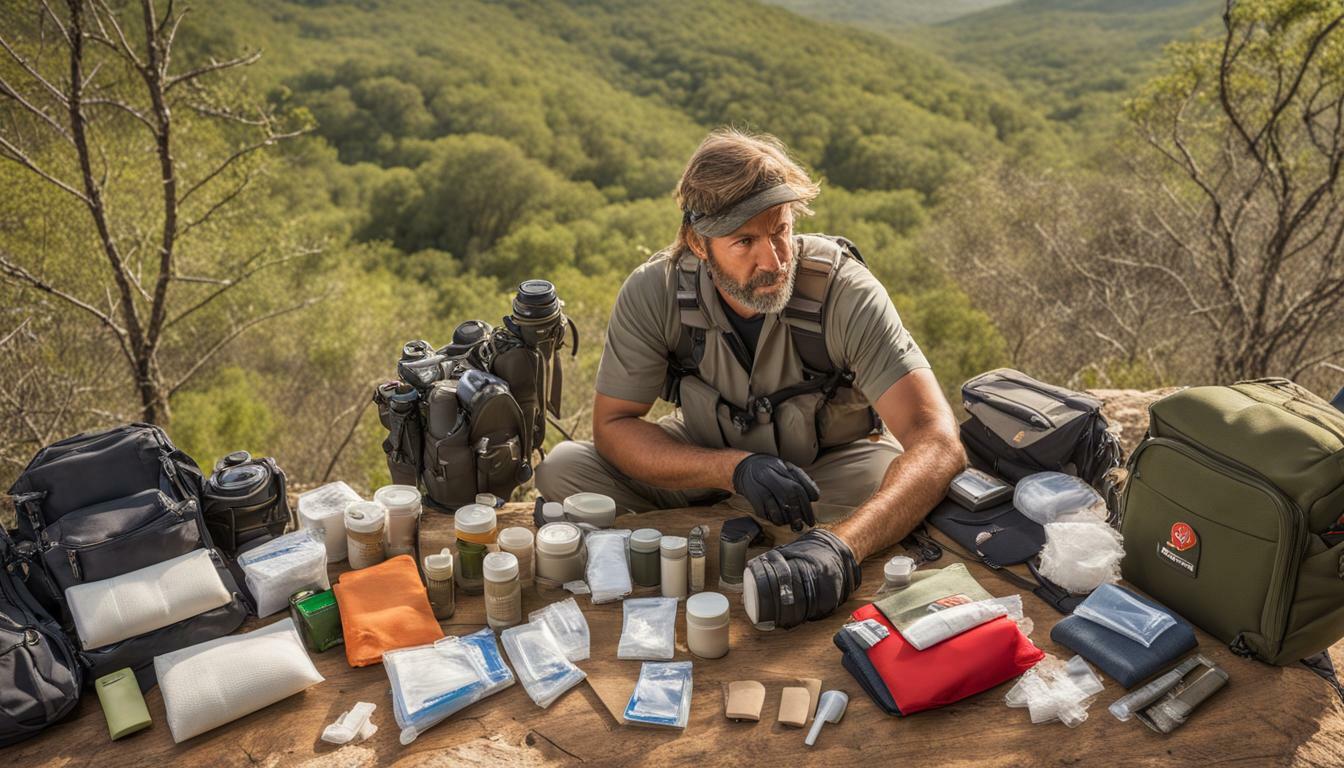Welcome to our article on the importance of first aid kits for wildlife photographers. As a wildlife photographer, you understand the thrill of capturing stunning images of the natural world. However, it’s crucial to remember that safety should always be your top priority in the unpredictable wilderness of the UK.
Being prepared with the appropriate equipment and knowledge is essential, as accidents can happen in any environment. In this section, we will discuss the significance of first aid kits for wildlife photographers and how they can contribute to safety in nature. It’s important to remember that nature photography safety should always come first.
While exploring the vast wilderness, you may encounter a variety of hazards, such as unpredictable wildlife, harsh weather conditions, and challenging terrains. Consequently, it’s always wise to be equipped with a first aid kit that contains all the necessary supplies to treat common injuries in such settings.
Stay with us for practical tips on building your own customized first aid kit, essential components that should be included, and precautionary measures that can minimize risks. Our goal is to help you stay safe while capturing stunning images of the natural world. Let’s delve into the world of outdoor safety for wildlife photographers!
Understanding the Risks of Wildlife Photography
Wildlife photography can be a thrilling and rewarding experience, but it also comes with inherent risks that should not be taken lightly. Outdoor safety for wildlife photographers should be a top priority, and one way to ensure this is by having knowledge of wilderness first aid for photographers.
Working in natural settings can pose numerous challenges, including navigating through unfamiliar terrains and encountering unpredictable wildlife. It is important to remember that even seemingly harmless animals can be dangerous when they feel threatened or if they are protecting their young. Additionally, exposure to harsh weather conditions can also present a risk for wildlife photographers.
Therefore, it is crucial for photographers to have a good understanding of the potential risks and hazards they may encounter while working in the wilderness. This knowledge can help them to prepare better and equip themselves with the necessary tools to stay safe.

“The beauty and mystery of the wilderness are truly amazing, but it can also be dangerous. We must always exercise caution and be prepared for any situation that may arise.” – Anonymous wildlife photographer
The Importance of First Aid Kits for Wildlife Photographers
When it comes to wildlife photography, being prepared for the unexpected is essential. The wilderness of the UK can pose a range of risks and hazards, from unpredictable wildlife to harsh weather conditions. This is why having the right safety equipment, including a first aid kit, is crucial for nature photographers.
A first aid kit is a collection of essential items that can help provide immediate medical attention in the event of an injury or emergency. These kits can be purchased pre-made or assembled yourself, and should be tailored to the specific needs of wildlife photography.
Having a first aid kit on hand is important because it allows wildlife photographers to respond quickly to injuries and provide temporary relief until professional medical help can be obtained. In nature photography, injuries such as cuts, scrapes, insect bites, and stings can occur frequently, making a well-stocked first aid kit an essential piece of nature photography safety equipment.
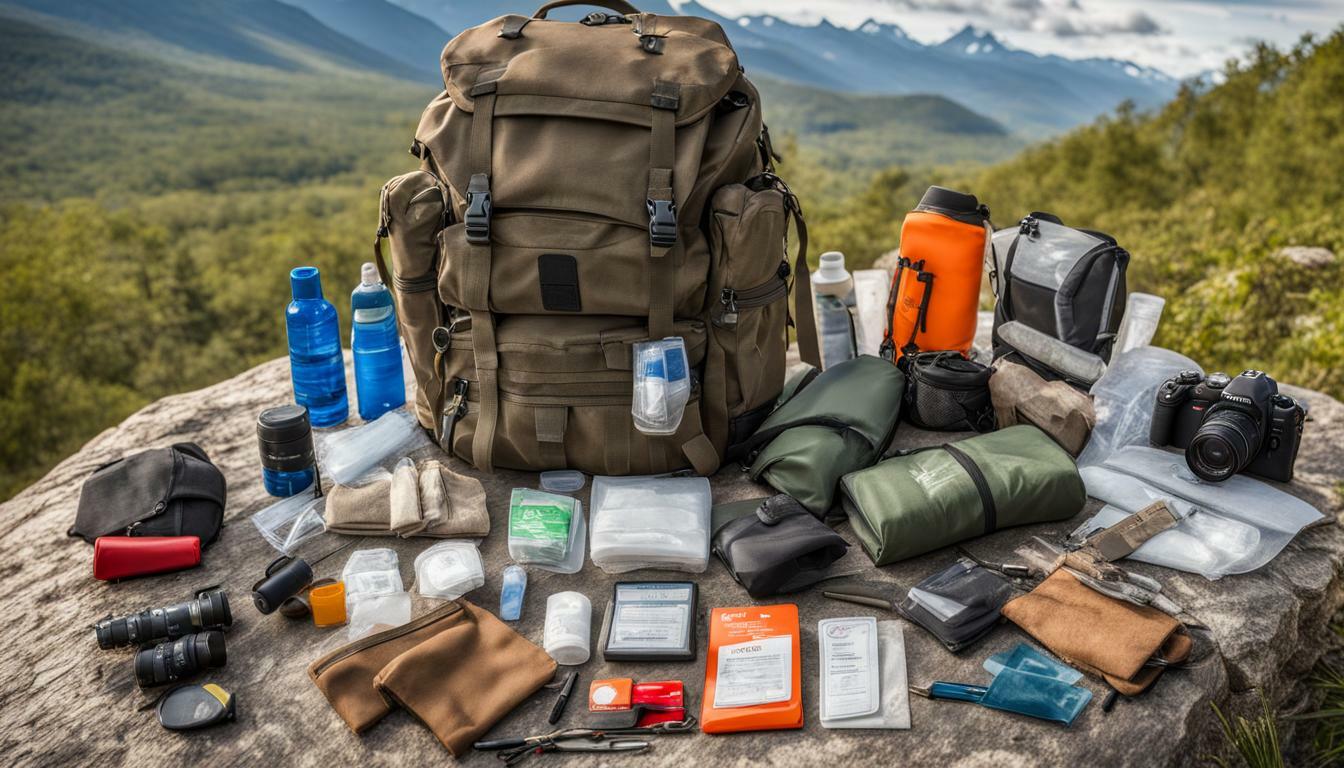
Some of the essential items that should be included in a first aid kit for wildlife photography include bandages of various sizes, antiseptic wipes, insect repellent, sunscreen, tweezers, and a snake bite kit. It is also important to consider the location and length of the photography trip, as well as any specific medical needs of the individuals involved.
Overall, a first aid kit is a vital piece of nature photography safety equipment that all wildlife photographers should have on hand. Being prepared and equipped with the necessary tools and knowledge can help ensure a safe and enjoyable photography experience in the unpredictable wilderness.
Essential Contents of a Wildlife Photographer’s First Aid Kit
When it comes to venturing into the wilderness for a photography session, it’s essential to have a first aid kit that is tailored to the unique needs of a wildlife photographer. A comprehensive first aid kit can make a difference in an emergency or simply in providing temporary relief until professional help arrives. Here are some of the essential contents that should be included in a Wilderness Survival Kit for Photographers.
| Item | Purpose |
|---|---|
| Band-Aids (in various sizes) | For covering small cuts and scrapes quickly. |
| Gauze pads and rolls | For covering larger wounds and providing additional padding around wounds. |
| Sterile Saline Solution | For flushing out cuts and scrapes thoroughly to prevent infection. |
| Antiseptic Wipes | For cleaning wounds. |
| Instant Cold Packs | For cooling down burns, insect bites & stings and heat exhaustion quickly. |
| Insect Repellent | To ward off insects and prevent bites & stings. |
| Tweezers | To remove ticks and splinters. |
| Surgical Scissors | For cutting clothes or bandages in an emergency. |
| Emergency Blankets | To keep warm and dry in case of an emergency or sudden drop in temperature. |
| Whistle | For signaling for help in an emergency. |
| Digital Thermometer | To monitor body temperature and potential fever in case of heat stroke or hypothermia. |
When creating a first aid kit, it’s important to remember that different wildlife photography trips may require additional items. Depending on the location and specific risks, a snake bite kit and CPR mask may be necessary, so research beforehand to ensure that all needs are met. The key is to have your kit with you and within reach whenever you’re out in nature to ensure that you’re ready for anything.

Tips for Building Your Own First Aid Kit
Building your own customized first aid kit is an essential step in ensuring safety while working as a wildlife photographer. Here are some practical tips to consider when creating your own kit:
1. Consider the location and duration of your photography trip: The contents of your first aid kit should be tailored to match the specific location and duration of your trip. For example, a longer trip may require additional supplies, while a remote location may require more emergency equipment.
2. Research the specific risks of your photography trip: It is important to research the specific risks associated with your trip, including potential wildlife encounters, climate conditions, and terrain. This will help you determine the necessary equipment and supplies to pack in your first aid kit.
3. Include essential first aid items: Your first aid kit should include essentials such as bandages, antiseptic wipes, and pain relief medication.
4. Pack equipment for emergency situations: In addition to first aid supplies, it is important to pack equipment for emergency situations, such as a flashlight, whistle, and emergency shelter.
5. Get familiar with your kit: Before embarking on your photography trip, make sure to familiarize yourself with the contents of your first aid kit and how to use them properly.
6. Keep your kit in a waterproof container: To protect your first aid supplies from moisture, it is important to keep them in a waterproof container.

By following these tips, you can build a comprehensive first aid kit that will help ensure your safety while working as a wildlife photographer.
Training and Education for Wildlife Photographers
When it comes to outdoor safety for wildlife photographers, training and education are key. By staying up-to-date with the latest wilderness first aid techniques and emergency response procedures, photographers can act quickly and confidently when faced with unexpected situations. Additionally, learning about the risks associated with working in nature and how to mitigate them can help prevent accidents from happening in the first place.
There are many resources available for wildlife photographers looking to improve their safety knowledge and skills. First aid courses specifically tailored for outdoor enthusiasts, such as the Outdoor First Aid course offered by the British Red Cross, can provide valuable training in wilderness first aid, including how to manage injuries sustained in remote locations.
Photographers should also consider obtaining relevant certifications, such as the Outdoor Emergency First Aid Level 3 certification, which covers a wide range of first aid scenarios that may be encountered while working in nature. Additionally, staying informed about safety guidelines and best practices presented by wildlife conservation organizations can further enhance photographers’ ability to make informed decisions while in the field.
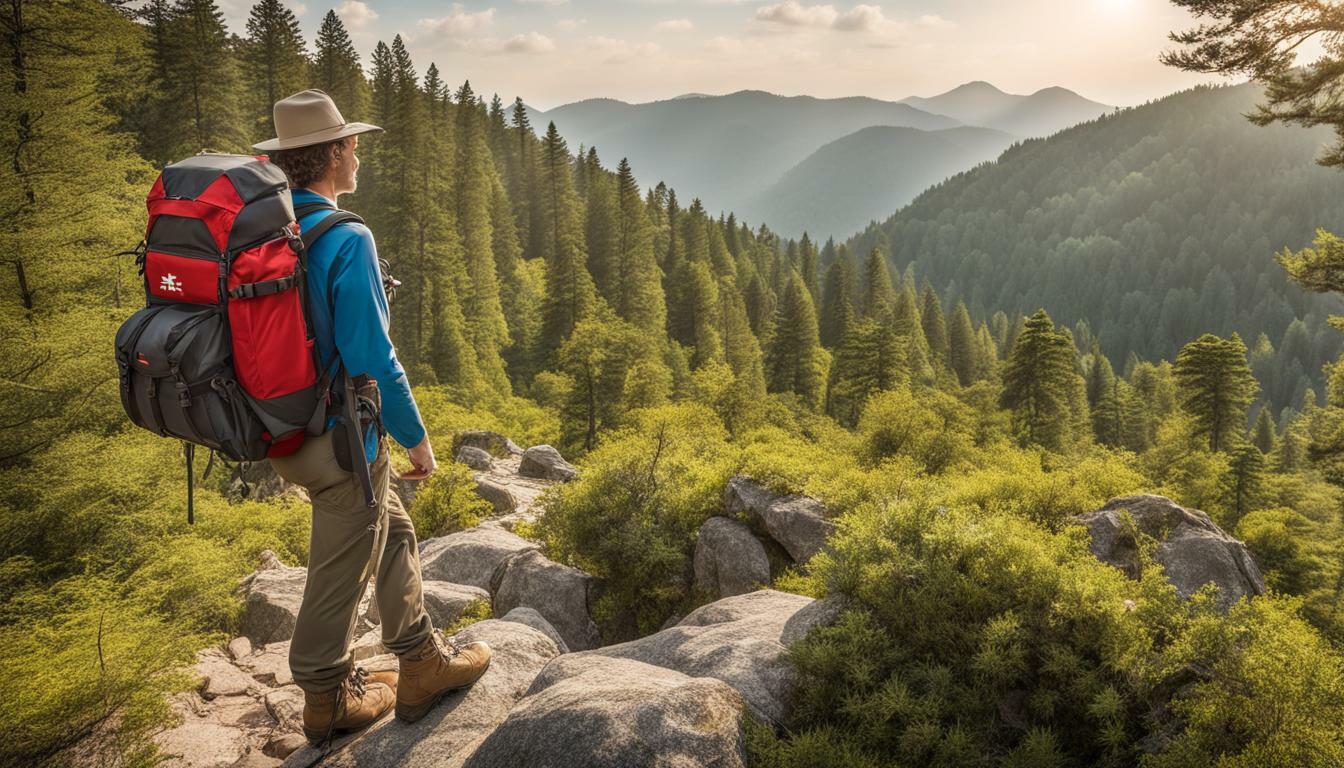
Ultimately, investing in training and education is an important step in ensuring the safety of both photographers and the wildlife they are working with. By being proactive and prepared, photographers can reduce the risks associated with their work and enjoy a safe and rewarding experience in nature.
Precautionary Measures for Wildlife Photographers
While having a well-stocked first aid kit is essential, preventing emergencies from happening in the first place is equally important. Here are some precautionary measures you can take to minimize the risks associated with wildlife photography:
- Research and planning: Before embarking on a photography trip, do your research on the location, weather conditions, and the wildlife species you may encounter. Plan your route in advance and take note of potential hazards and emergency services available in the area.
- Communication devices: Make sure to carry communication devices such as a mobile phone or a two-way radio to call for help in case of an emergency. Test your devices before heading out and ensure they are fully charged or carry extra batteries.
- Safety guidelines: Many wildlife conservation organizations provide safety guidelines for photographers working in natural settings. Take the time to familiarize yourself with their instructions and follow them diligently.
By taking these precautionary measures, you can significantly reduce the likelihood of accidents and injuries while working in nature. Remember, prevention is key to ensuring your safety while capturing stunning images of wildlife.
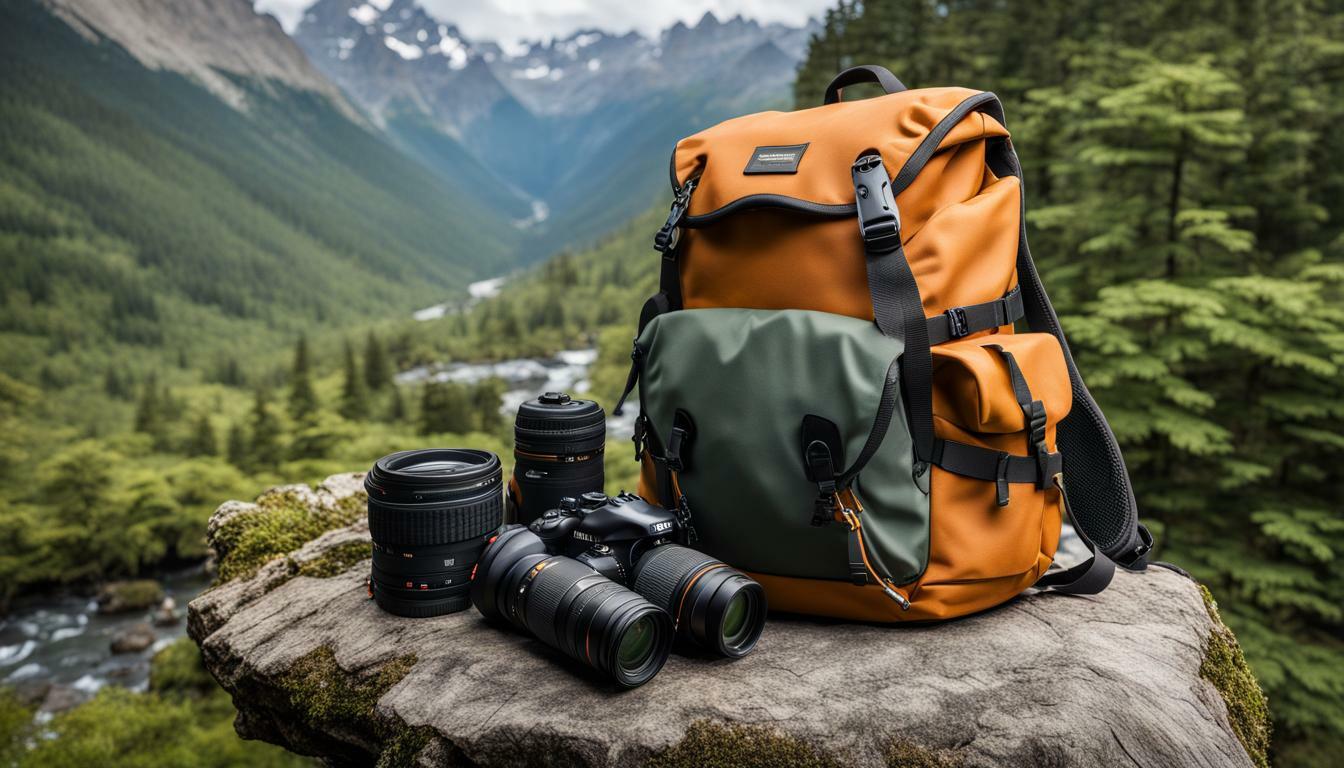
Dealing with Emergencies in the Wilderness
Despite taking all the necessary precautions and having a well-stocked first aid kit, emergencies can still happen. In the unfortunate event of an accident or injury, it is crucial to remain calm and take appropriate actions to ensure the safety of everyone involved.
First and foremost, it is essential to assess the situation and determine the severity of the injury. For minor injuries such as cuts and bruises, administer first aid using the supplies in your first aid kit. For more severe injuries, such as broken bones or head trauma, seek professional medical help immediately.
If professional medical help is not available, it is important to remain with the injured person and monitor their condition. Keep them comfortable, warm, and hydrated while waiting for help to arrive.
It is highly advisable to carry a communication device such as a satellite phone or a Personal Locator Beacon (PLB) that can be activated in the event of an emergency. These devices can transmit a distress signal that alerts emergency services and provides your exact location, making it easier for rescuers to reach you.

Remember, prevention is always better than cure. Always research your destination, plan your route and notify someone of your plans. Being adequately prepared and knowledgeable in wilderness first aid can go a long way in ensuring your safety while pursuing your passion for wildlife photography.
Case Studies: Real-Life Wildlife Photography Incidents
In this section, we will take a look at some real-life incidents where wildlife photographers faced unexpected situations and how their preparedness and first aid knowledge played a crucial role in ensuring their safety and the safety of others. These incidents serve as cautionary tales and highlight the importance of being equipped with essential first aid for wildlife photographers.
Case Study 1: Snakebite in the Wilderness
During a wildlife photography expedition in the Scottish Highlands, a photographer accidentally stepped on a venomous snake, which bit him on the ankle. He immediately used his first aid kit to administer a compression bandage and keep the affected area immobilized. He then contacted emergency services, who arrived promptly and were able to provide further treatment. Thanks to his quick thinking and preparedness, he was able to avoid serious harm.
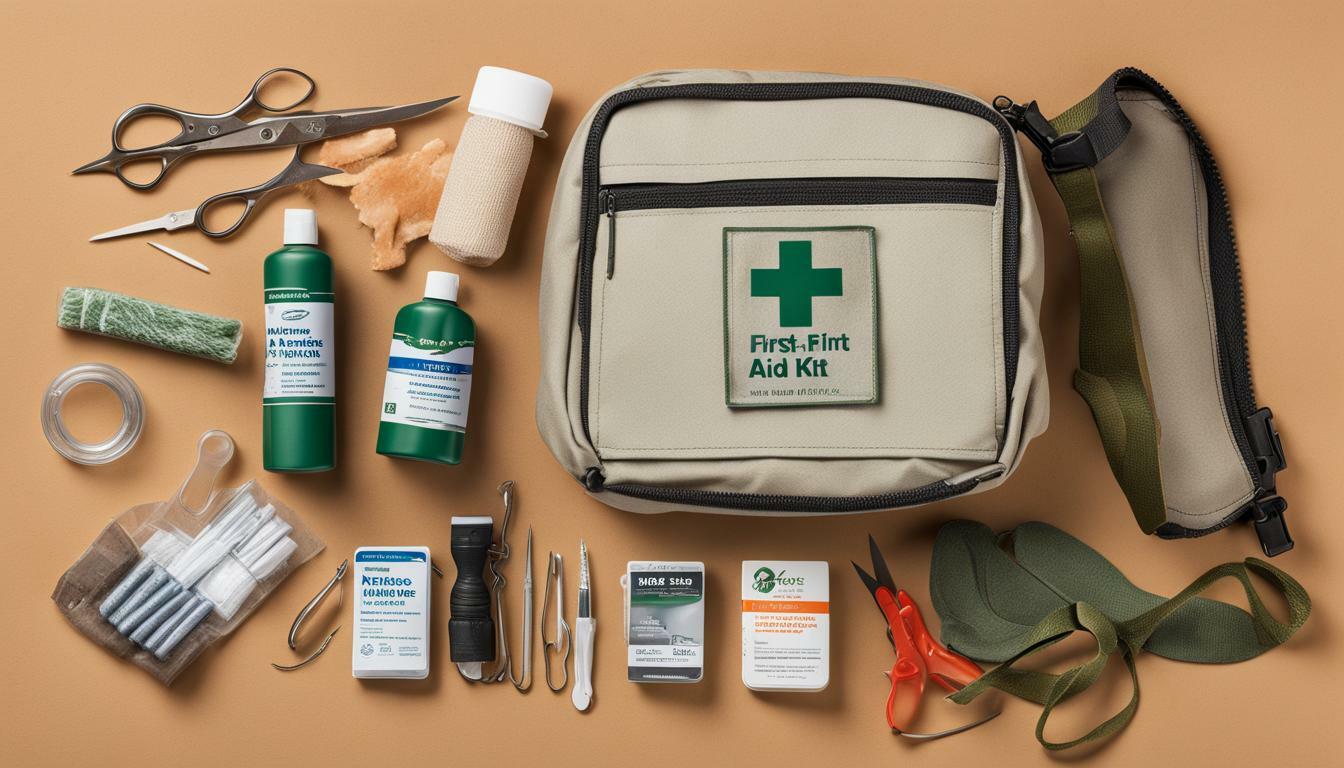
Case Study 2: Hypothermia in Challenging Conditions
A group of wildlife photographers were seeking to capture Northern Lights in the Arctic region. Despite being equipped with warm clothing, they were caught in a sudden snowstorm that left them exposed to the cold. One of the photographers began to display symptoms of hypothermia, including shivering and confusion. The rest of the group recognized the emergency situation and quickly used their first aid kit to wrap the victim in a space blanket and provide hot liquids to help raise their body temperature. They were able to continue their photography trip, with no further complications.
Case Study 3: Dehydration in Desert Conditions
On a wildlife photography trip to the Saharan Desert, a photographer became severely dehydrated due to the extreme heat and lack of water supplies. Recognizing the symptoms of dehydration, including dizziness and fatigue, the rest of the group immediately used their first aid kit to provide oral rehydration salts and cool the affected person with water. They were able to stabilize the victim and arrange for further medical attention.
These case studies emphasize the importance of essential first aid for wildlife photographers in ensuring safety in nature. A first aid kit containing the necessary equipment can often mean the difference between life and death, especially when professional medical help is not readily available. By staying prepared and knowledgeable, wildlife photographers can continue to capture stunning images while minimizing the risks and hazards of working in natural settings.
The Importance of First Aid Kits for Wildlife Photographers
When it comes to wildlife photography, safety should always be a top priority. The unpredictable wilderness of the UK can pose several risks and hazards, making it crucial for wildlife photographers to be prepared for any situation. One of the essential tools to have on hand is a first aid kit.
A well-stocked first aid kit can provide immediate relief for injuries while waiting for professional medical help. It can also help prevent injuries from becoming more severe. The importance of first aid kits for wildlife photographers cannot be stressed enough.
Why First Aid Kits are Necessary
Accidents can happen at any time, especially when working in natural settings. From minor cuts and bruises to more severe injuries, first aid kits can provide the necessary equipment to provide temporary relief. Some injuries may require professional medical attention, but a well-stocked first aid kit can help stabilize the situation until help arrives.
A first aid kit can also help in emergency situations where medical help may not be immediately available. This is particularly important when working in remote areas where access to medical facilities is limited.
What to Include in a First Aid Kit
The contents of a first aid kit for wildlife photographers may vary, depending on the specific needs of the individual and the location of their photography trip. However, some essential items to include are:
- Bandages and gauze
- Antiseptic wipes and cream
- Tweezers
- Insect repellent
- Sunscreen
- Safety scissors
- Pain relief medication
Additional items to consider may include a basic survival kit, a flashlight, and a whistle for emergency situations.
Building Your Own First Aid Kit
Building your own customized first aid kit can ensure that you have all the necessary equipment for your specific photography needs. When building your first aid kit, consider the location, duration of your photography trip, and any potential risks that may be encountered.
It’s also essential to keep your first aid kit up-to-date and replenished, as items may expire or run out over time.
Conclusion
Wildlife photography can be a thrilling and rewarding experience, but it’s essential to prioritize safety and preparedness. A well-stocked first aid kit can provide immediate relief in case of injuries and can help stabilize emergency situations while waiting for professional medical help.
Remember to customize your first aid kit to fit your specific needs and keep it up-to-date and replenished. With the right knowledge, equipment, and preparation, you can ensure a safe and enjoyable wildlife photography experience.
